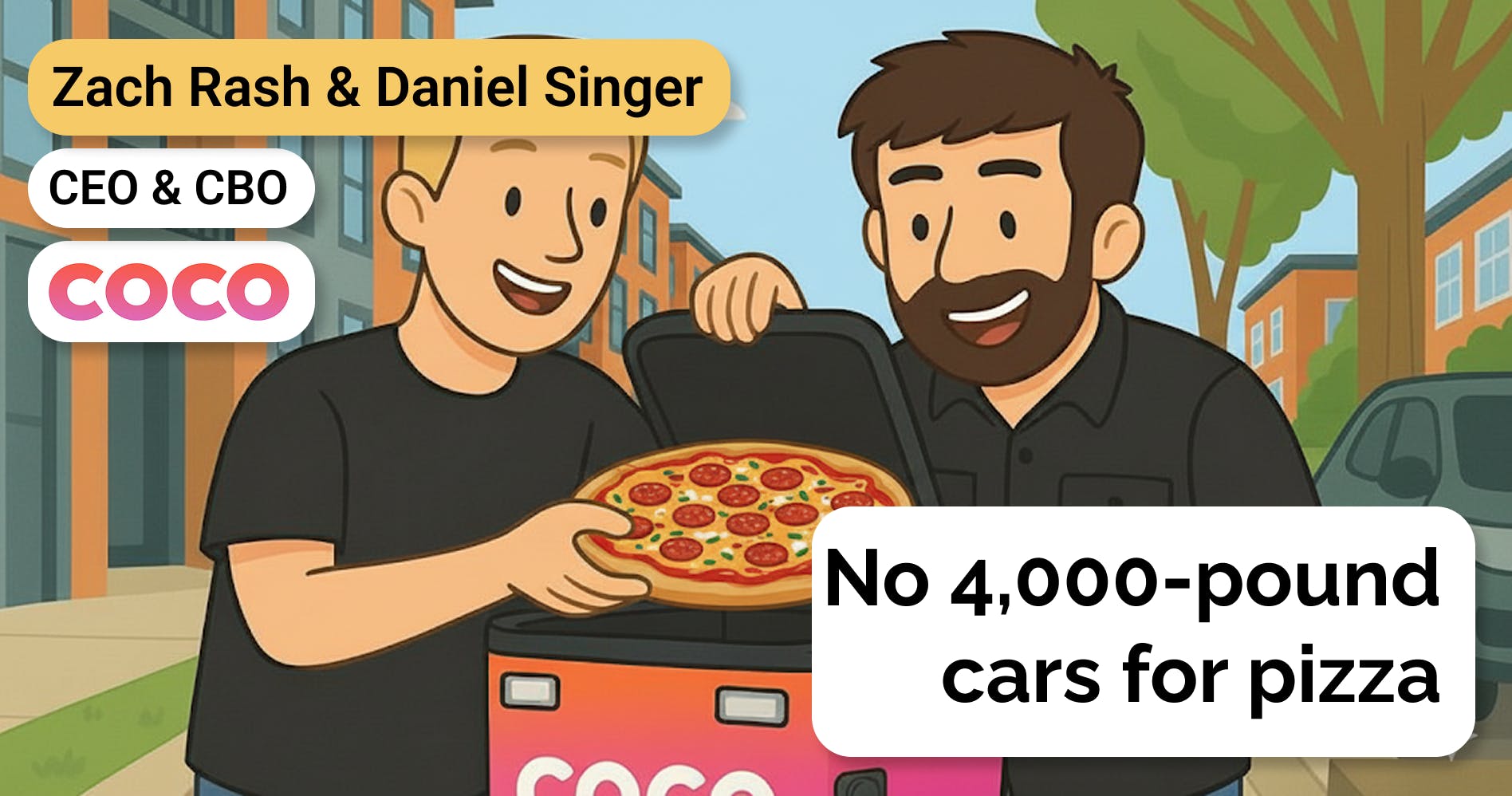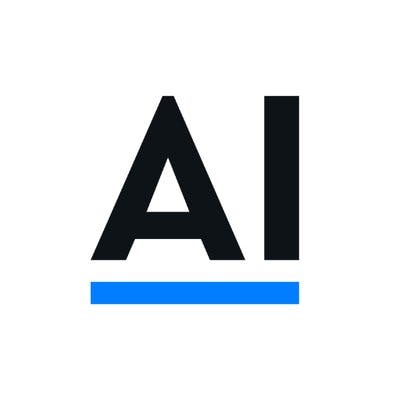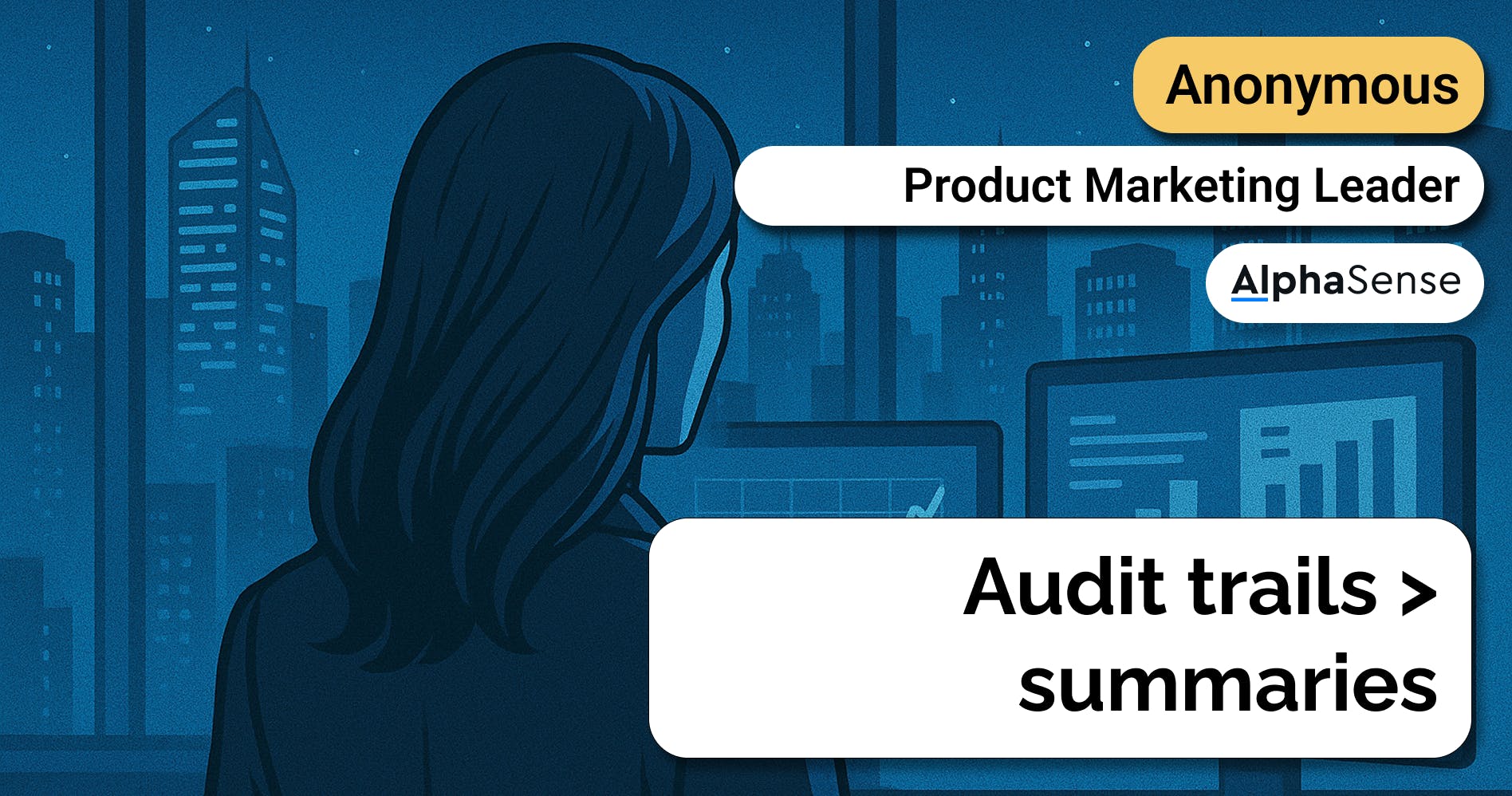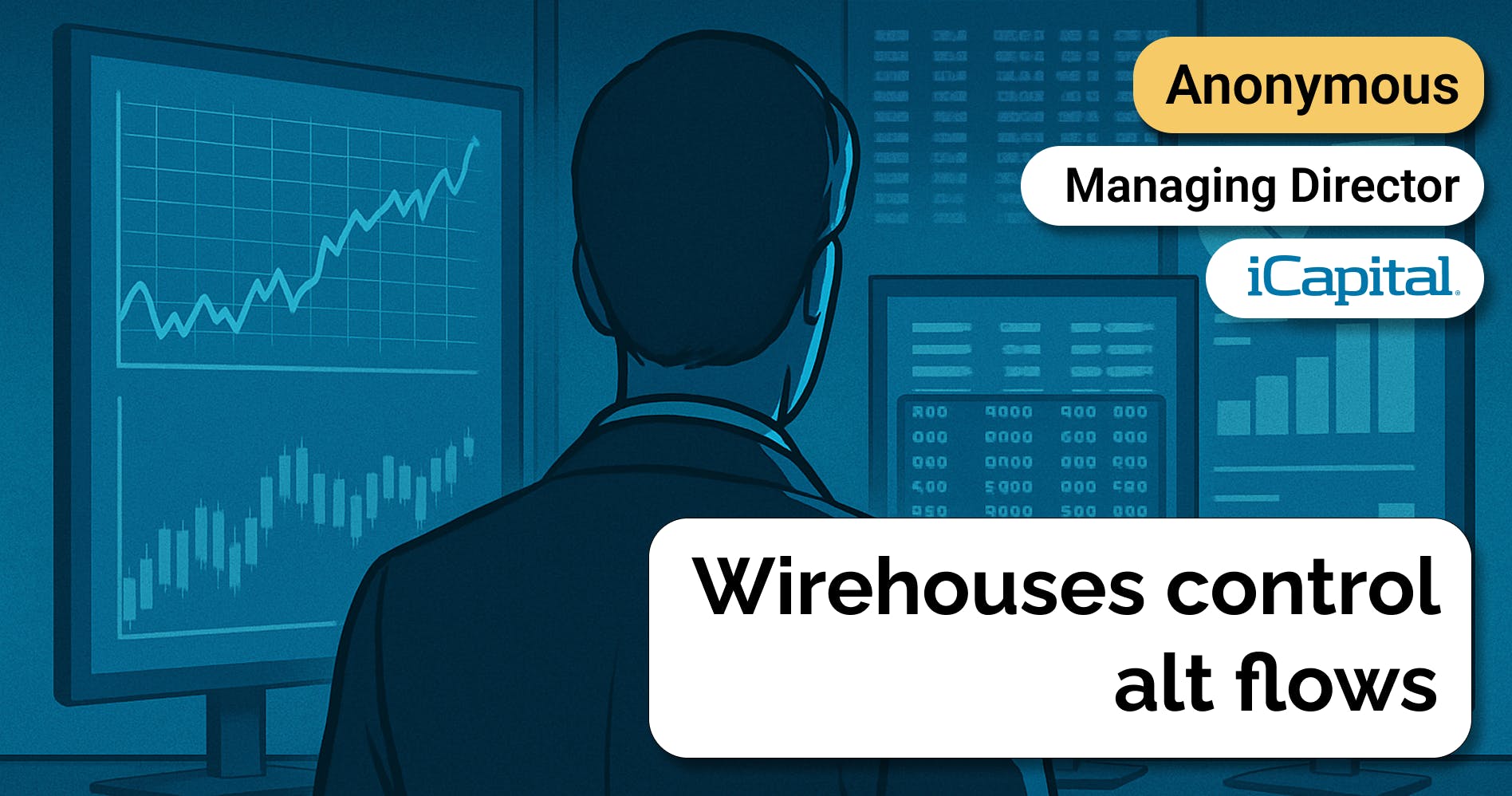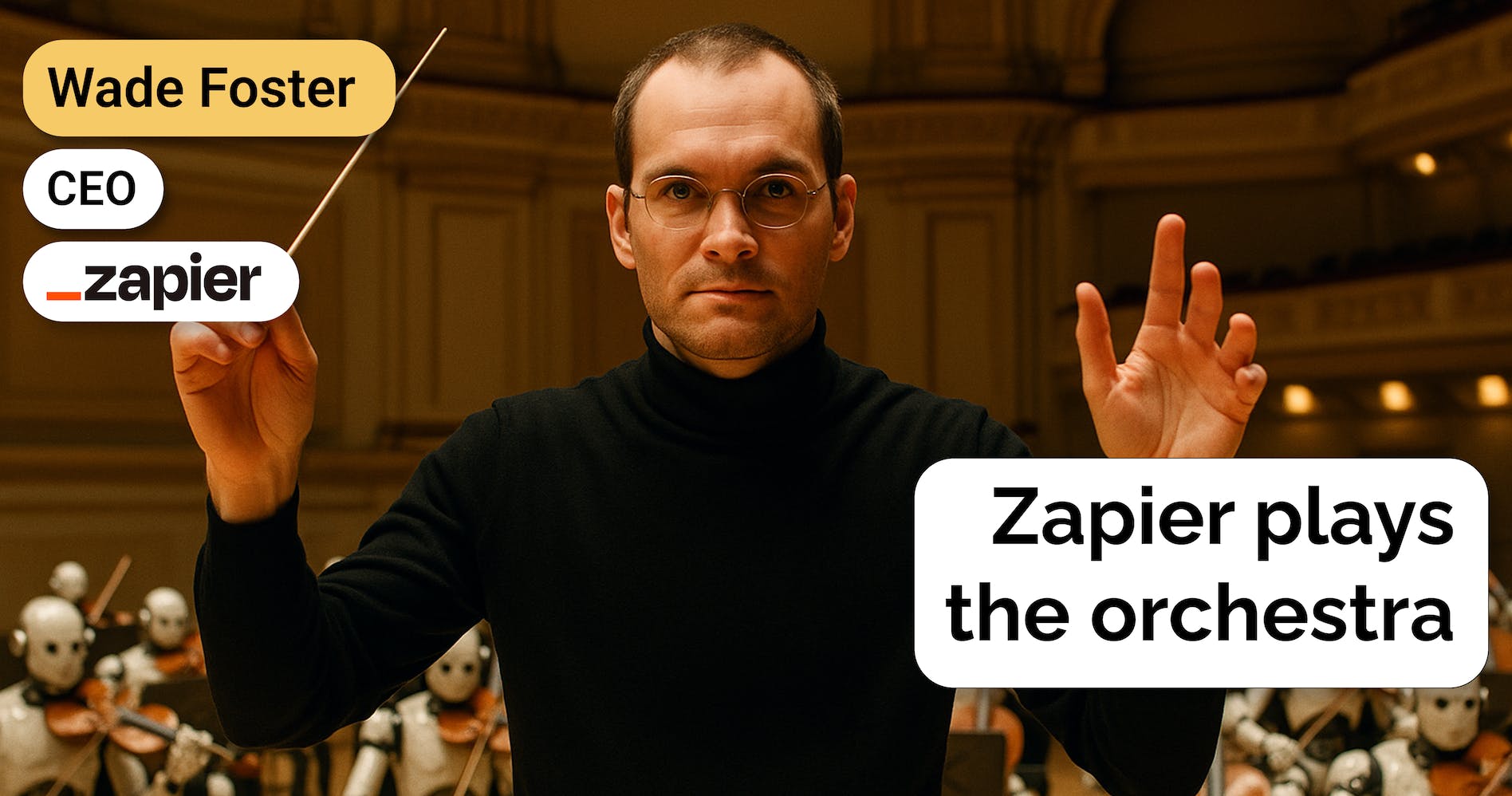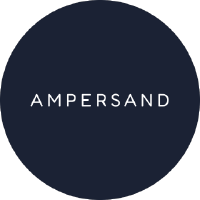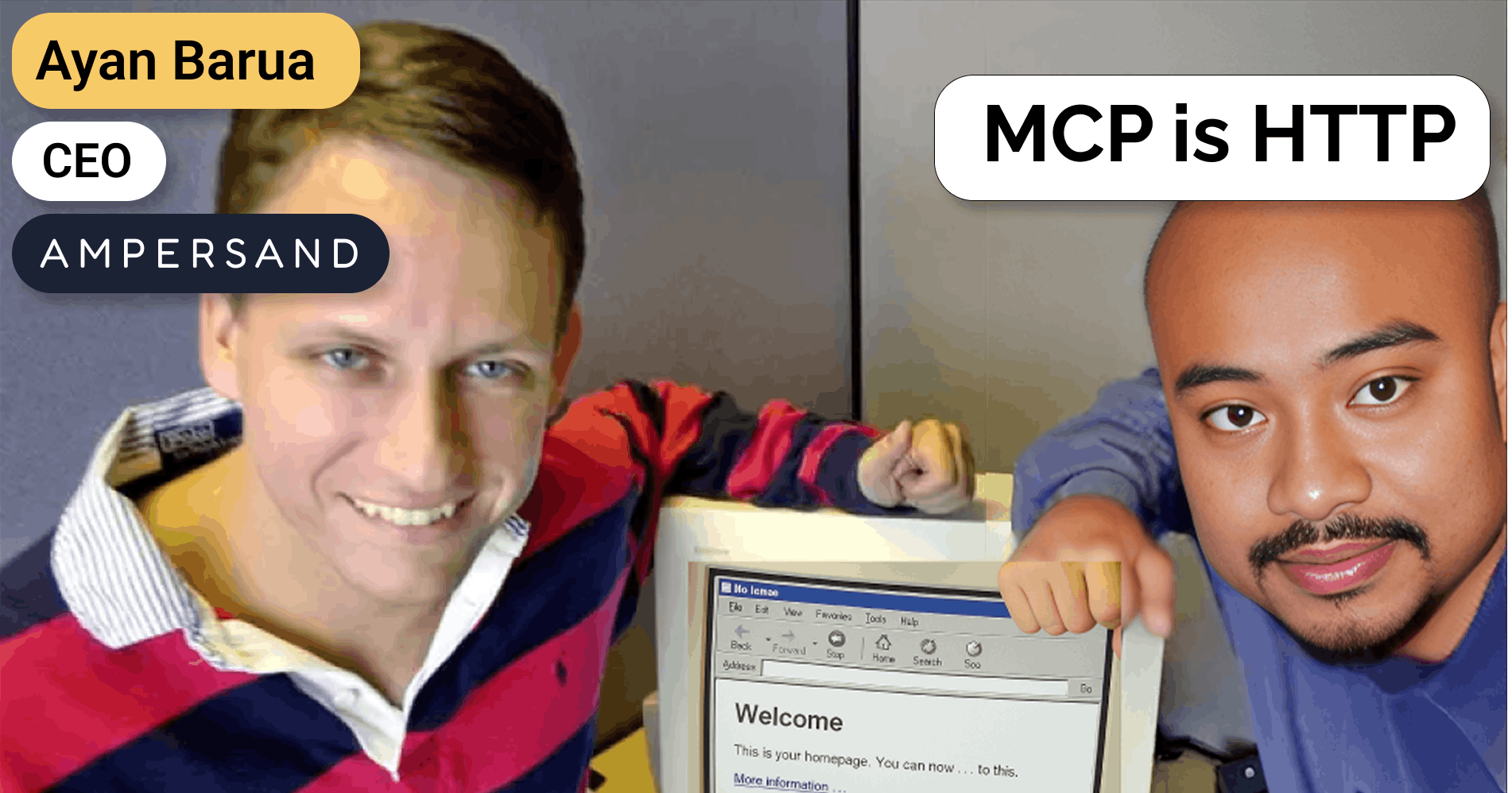Developer relations leader at N8n on automation beyond chatbots
 Jan-Erik Asplund
Jan-Erik Asplund
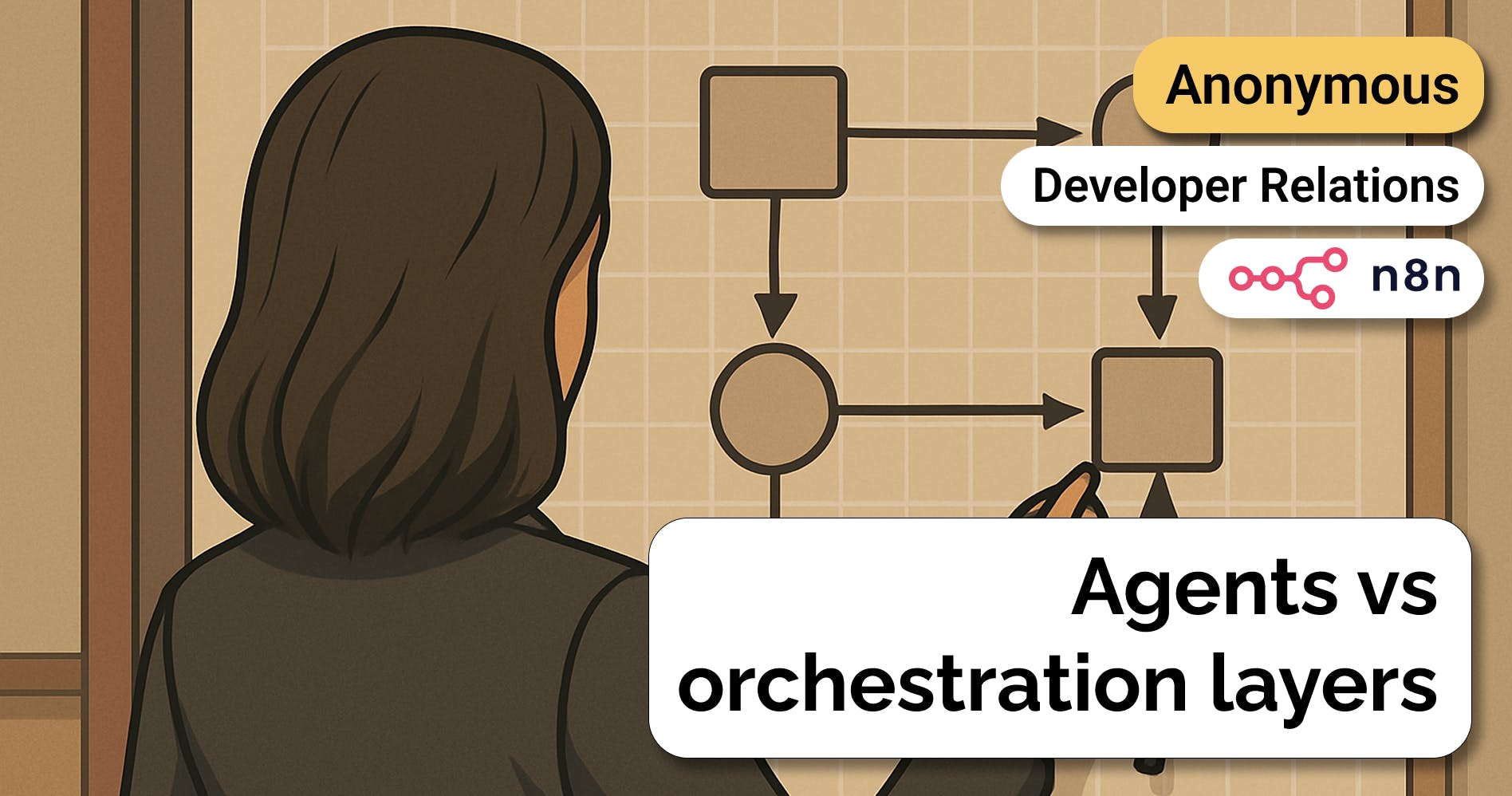
Background
We spoke with a developer relations leader at n8n who has deep insight into the low-code automation platform's user base and growth strategy.
Our conversation explored how n8n differentiates itself through flexibility across diverse use cases, the platform's three distinct user personas, and the challenges of balancing broad market appeal with targeted industry solutions.
Key points via Sacra AI:
- n8n's biggest differentiator is its low-code flexibility that appeals to three user personas—from non-technical users to advanced developers—with the intermediate users being the stickiest. "n8n's biggest differentiator and why it's currently an industry leader is low code automation. This means anybody can access the platform... These are the people who have invested the most time, passion, and knowledge into the platform. They're the most inspired and nearly always the users with the most workflows and actions being performed within the n8n space."
- The platform enables workflow automation across fragmented tools and systems by allowing users to connect any data source or API without requiring native partnerships, making it particularly valuable for industries with disconnected tech stacks. "n8n is primarily there to pass data from one platform, software, API, database, etc., and make it so that it can be read and understood by a third party or another database, server, API, etc. Because of this, it's extremely flexible for making an entire smart system work without any credential partnerships, being able to connect business software and operational software without any requirement for native integration."
- While 90% of n8n's growth comes from organic word-of-mouth among developers, its business model faces challenges in template development speed and onboarding friction that could limit enterprise adoption. "In my personal opinion, I feel that the model n8n currently has will be outcompeted very quickly... the period between discovering a workflow that fulfills a frequent use case and converting it into a template is very long. As a result, the appeal of that specific template or the ability to use it as a marketable asset diminishes because nobody is processing these template submissions efficiently."
Questions
- Big picture first. What do you think is the biggest misconception about either n8n or the broader automation AI agent orchestration market right now?
- Let's explore who's actually using n8n day to day. When someone sets up and runs workflows, who is that typically? And separately, who tends to be the one actually paying for n8n when it's used inside a team or company?
- Given this broad user base and flexible approach, what do you see as n8n's top differentiators or moats?
- That's a great breakdown. A point you might want to mention is the driver for people looking for automation platforms like n8n.
- What are the most sticky use cases or features you've seen in n8n? The kinds of workflows or capabilities that keep people coming back over 6, 12 months. Is there a pattern there?
- One more important sticking feature is related to the user personas you mentioned earlier.
- Let's talk about growth next. Where are most new sign ups coming from today? You'd mentioned organic and word-of-mouth before. Can you expand on mechanics behind that? What's working?
- What's your take on how durable n8n's revenue model is over time? What makes users or teams convert to paid instead of staying on community edition? Or just self hosting for free?
- What specific improvements or changes would you recommend?
- Which user segments do you think actually convert to paid?
- Very quickly, can you tell me one or two key signals you'd advise an investor to watch for in this category? Specifically in workflow automation and AI agent orchestration. Given everything you've just laid out about speed of innovation, user-driven growth, and competition. What should they pay close attention to?
Interview
Big picture first. What do you think is the biggest misconception about either n8n or the broader automation AI agent orchestration market right now?
The biggest misconception about AI automation and its business integration is that it's limited to chatbots, data processing, or customer handling. n8n, as a low code automation platform, provides a foundational framework where you can click and drag nodes into a workflow to create a chatbot. However, n8n's flexibility allows you to program nodes to operate between different APIs and third-party software.
You can make AI automation nodes perform various tasks. For example, you can feed it with your niche dataset so the AI only pulls from data you've provided. If you worked in the medical industry specializing in diabetics, you could drill down to that level of data passing for only diabetics within a certain population or give it exact information to pull from.
You can create a workflow with a direct Slack DM chat to reference things that might have appeared between customers, using only the database you've provided. You could DM your personal chatbot in Slack and ask a niche specific question about diabetics or habits and trends based on anything being input into your database. This reduces hallucinations because there's no extrapolation—it's not pulling solely from the AI API or ChatGPT's internal operations framework. It's pulling primarily from your data source, which minimizes errors because it's only using what it knows.
Additionally, another misconception is that it's difficult to implement. n8n makes it extremely easy with its click and drag framework on a canvas. It provides step-by-step guidance for setting up different nodes to make the entire workflow function. From my perspective, these are the two biggest misconceptions: that it's all about chatbots and that it's hard to integrate into your business.
Let's explore who's actually using n8n day to day. When someone sets up and runs workflows, who is that typically? And separately, who tends to be the one actually paying for n8n when it's used inside a team or company?
n8n is segmented into three personas. First, you have the zero programming knowledge user who discovered the platform through word-of-mouth, organically came over independently and not through reference. This is your standard user who needs a simple task performed, and then once they've got it set up, they leave it and you don't hear from them again.
Second, you have the intermediate user. This is the person who might have their own small business or a side hustle, always trying to make something within their day-to-day life run more efficiently in a way that's more tailored to their use case. These are usually educated individuals who have the time, patience, and willingness to learn the programming knowledge they need. These are very passionate and invested people. They're not programmers, so they're not advanced, however, they are the majority of people using n8n, especially because they stick around the longest. They have the most investment and knowledge of the platform because they spent the time researching and educating themselves on how best to use it.
The final persona set is the advanced developer. These are people who perform certain tasks, whether within their role or as part of a hobby or interest. They know what programming operation they need to perform, but places like GitHub aren't providing them with the source code they need. So they go to n8n to use either templates that exist already or they design workflows tailored to their needs. Because of their programming knowledge, if the node isn't performing in the way they want, they can make their own custom nodes to pick up where n8n hasn't yet implemented what they need.
It's extremely flexible for those people because they understand that the low code general idea behind n8n is they don't need credential partnerships or software partnerships to make the nodes work. They can just drag and drop a performance or action or task node, and then connect to the API they want, hook it to your server or database point. n8n is primarily there to pass data from one platform, software, API, database, etc., and make it so that it can be read and understood by a third party or another database, server, API, etc. Because of this, it's extremely flexible for making an entire smart system work without any credential partnerships, being able to connect business software and operational software without any requirement for native integration.
This is where our upper level of business comes into play. n8n has individual user licenses for people on their own who might be intermediate, base level, or a developer with their own side hustle. But they also have enterprise licensing, where the client is paying for direct access to support and licenses for multiple users sharing the same workflows.
Usually, the majority of leads are generated from developers who are performing a task within their daily work life, have discovered that n8n can make operational tasks more effective, and have recommended n8n to upper management. Once management agrees, they integrate n8n across their entire backend or frontend or UX team, with all team members having shared licenses to access the same workflows created to help different aspects of the business operate.
The key point to bear in mind is that n8n doesn't target specific regions—they don't focus specifically on Europe or America. They are entirely use case and industry driven. This is the only way you can sell this type of platform. It's about looking at how users who are organically coming are using the platform and then scaling what they have produced, turning user-created workflows into native features and approaching industries that could benefit in the same way existing users are already benefiting.
A prime example would be InfoSec. The InfoSec industry has numerous software dependencies like incident detection systems or SIEMs that don't natively link together. As it stands, they don't perform the next step in cybersecurity operations—they just alert. They still heavily depend on manual responses to those alerts. n8n is being used to be that link between receiving an alert from these incident detection systems and then executing actions based on conditions, priority, or whatever has been programmed as key information, then triggering the next step in the workflow. All of that is automated based on the workflow that a developer who found the platform implemented because they realized it was something they needed.
Given this broad user base and flexible approach, what do you see as n8n's top differentiators or moats?
n8n's biggest differentiator and why it's currently an industry leader is low code automation. This means anybody can access the platform. It's accessible to everyone, provided you're willing to implement a certain level of time and knowledge investment.
If you are the intermediate user who has a side hustle and wants to make their business operate as if it had multiple employees when there's only one person, you can do that relatively easily. It still requires investing a little time into understanding the basics of JSON or JavaScript or Python. Once you have the basic concepts behind that, n8n becomes a tool that you can run wild with. There are endless possibilities in how it can be applied, evolved, and built upon by users, and how it can be established in areas they don't even realize until users start doing it.
For example, one developer made his phone function as a central hub for his smart home. He connected various smart devices in his household to respond and act according to how he operated his phone. When his alarm went off in the morning, it would trigger his automated curtain openers, then trigger his smart mirror to display weather and daily tasks, and start his coffee machine. If he was out of the house and checking recipes on his browser, his phone would pass that data to his workflow, which communicated with his smart fridge to let him know if he had the ingredients or needed to pick something up on the way home.
He did this all as a passion project built entirely within n8n's framework—a blank canvas with drag and drop nodes that he could automate or manually customize as needed. This level of flexibility and customization is why n8n is so successful. It doesn't limit itself to a small area of automation.
There are many AI automation platforms that target specific regions or tasks. Zapier only operates based on whatever credential partnerships it has so it can connect different platforms. Make is entirely InfoSec based. These platforms are limiting themselves to niches, which doesn't necessarily mean they're doing anything better than n8n—it just means they're cutting themselves out of a broader market.
n8n has that broad market appeal. Unfortunately, because of this broad appeal, they struggle to market it in a way that appeals to different industries. But that's not necessarily a downside currently because 90 percent of their traffic, sign-ups, and customers come through organic means—word-of-mouth, promotion by affiliates, friends, family, and colleagues saying, 'This is how this low code automation platform has helped me, it's really easy to use and understand. The problem you're having can easily be fixed with it.'
This word-of-mouth approach and people trusting what their friends, family, and colleagues say makes n8n so appealing and adaptable. Anybody can use it and it can be applied to literally anything. The only limiting factor is the user's creativity and ability to program.
That's a great breakdown. A point you might want to mention is the driver for people looking for automation platforms like n8n.
The biggest driver for people looking for automation platforms like n8n is that right now, any consumable electronic within the home or piece of software automatically comes with its own login credentials, its own app, its own piece of software. If you're looking to automate every aspect of your different smart devices in your household, instead of having to look for something that specifically connects with Google or Google Home or Alexa, you can just go out and get whatever's cheapest or within your budget and have them communicate and work with each other how you want, regardless of whether they're natively partnered or paired.
It's very much the same in industry as well. You can see from the n8n website, with their use case storytelling and showcases of their successes, how people are integrating their niche templates and workloads to perform exactly the specific thing they need within the framework.
The agricultural industry is desperate for this kind of solution. With the evolution of more detailed soil assessment, crop assessment, drones being used to fertilize and apply pesticides, and more precise agricultural tech and automation to produce higher yields on larger scales, massive amounts of technology is being used—and none of them natively work together. They're all very niche, designed to do a specific thing in their area. n8n is being brought in to allow them all to communicate with each other, taking data from one probe monitoring a field and communicating, 'This soil is degraded by 90 percent, we need to proceed to crop rotation and 30 percent fallowing,' or 'We suggest additional drainage here.'
That data is fed into a format that can be pushed into action software, sending drones out to do watering or sending automated bots to remove weeds, all communicating seamlessly because you've implemented a workflow that waits for a keyword or a piece of data to meet the requirements to trigger action workflows. On top of that, there's bug reporting that automatically happens if it fails, and the developer can use that bug reporting to get notifications on their phone, email, or Slack DM.
There are so many possibilities. It is genuinely limited entirely by the developer or user's imagination and creativity.
What are the most sticky use cases or features you've seen in n8n? The kinds of workflows or capabilities that keep people coming back over 6, 12 months. Is there a pattern there?
Generally, the theme that's always been present for the whole automation industry is allowing more precise, efficient management of time within a task from beginning to end and enabling it to happen seamlessly with minimal user error.
For example, someone might be in charge of inputting data into a consumer database. The task itself would take hours of their working day, but it needs to be done for the next step of the operational process to continue. This person needs to manually import the data into the consumer database. Once it's input, the next department can start doing analytical assessments of what needs improvement, what inventory might be short, what documentation needs to be processed and shipped out, what reminders need to be issued, or what red flags need to be alerted. All of that is very manual and human-based.
The appeal for platforms like n8n is that somebody who is tired of doing a repetitive task that takes too much time, tired of consistent errors from manual handling, is looking for automation that can be plugged into their pipeline seamlessly with minimal input and have it operate without them having to babysit it or constantly check on it.
In terms of AI, the aspects of n8n's automation platform are very appealing to a broad market in that they allow you to connect any AI API. It could be ChatGPT, Gemini, or any large language model. You can make your own large language model by using that AI pausing node—you feed it with the information you want it to pull from, give it instructions on how it should respond by writing a permanent prompt that sets the tone and framework of responses, and then designate an output, whether that's a message, a prompt, or further input into another workflow.
You're free to do whatever you want with that AI—it doesn't always need to be fed into a chatbot. It can be part of the information processing so that when triggers are met, it performs a task and uses AI to extrapolate or give alerts or make it a bit more human.
These are the main reasons people come to n8n for their AI needs specifically—because it's not limited to a specific language model. You can use any language model you want and have it operate how you need it to. It doesn't have to be a chatbot—you can feed it into one of your existing workflows.
For example, in agriculture, imagine there was a workflow already operating without any AI. You can very easily take an existing AI template, fill in the data needed to make it operational, and instruct it to feed into or pull from an existing workflow without disruption.
These are the main reasons people look to n8n—to make processes more time efficient, remove human error, and for AI that's not limited to specific language models, only limited by a person's programming knowledge, creativity, and imagination.
One more important sticking feature is related to the user personas you mentioned earlier.
Another very important sticking feature relates to the intermediate users I mentioned earlier. These are the people who have invested the most time, passion, and knowledge into the platform. They're the most inspired and nearly always the users with the most workflows and actions being performed within the n8n space.
A lot of the time, it's to compensate for the absence of additional employees. A prime example would be a side hustle business where someone has their own ecommerce operation and is producing something to sell. They can't constantly manage their own social media, process orders quickly enough, dispatch invoices, or process payments. All of this takes a lot of time when there's only one person.
They invest as much time and energy into the platform as needed to make sure all of that is covered by simple workflows. They can use templates they can drag in and populate with the information they need to automate these processes.
Because they are the most invested, they're also the most passionate and the stickiest users. Their knowledge of programming is limited to what they've needed to learn to make the platform work. So if a price increase occurred, they're the least likely to move because all they can remember is the amount of energy and investment they put into this platform.
Having to learn a new platform or shift everything over to an alternative becomes too much of a task in their mind. If everything is operating perfectly and in the way they need it to, they're much less likely to move to a competitor because they can't easily grasp how difficult or easy it might be to migrate. They just see it as a lot more work that they don't have time for. Why bother when everything's working perfectly how they want it now? They're the most likely to accommodate price increases.
Let's talk about growth next. Where are most new sign ups coming from today? You'd mentioned organic and word-of-mouth before. Can you expand on mechanics behind that? What's working?
From my perspective and experience, being part of their community and in charge of understanding that specific topic, we found that about 90 percent of the organic traffic was coming from developers with intermediate to professional level programming knowledge. These are people who needed to perform a task in their personal or working lives and couldn't find the source code in GitHub or elsewhere, or they knew that investing time in programming it themselves would be very time-consuming.
They went to n8n because it has the node framework already there for the task they want to execute, requiring minimal input from their side to connect to all the different data sources needed to perform their task. These same developers then usually talk to each other. You can see this by looking at their Discord and Discourse forum—there's a lot of discussion around how somebody implemented a certain workflow and can't quite get it to do something, with others in that forum available 24/7 to help evolve the platform to meet the needs of others.
n8n has what they call an open source model. They have three different versions of the platform: the browser-based portal where intermediate and foundation knowledge users tend to go, the localhost version of the product, and an alpha testing version which you can opt in or out of. The locally hosted version is controlled entirely by the developer how they want. It takes the whole n8n framework and allows them to tweak it to any extent. They can submit their improvements and refinements to the GitHub as suggested improvements.
I don't know the exact process for ranking priority on which feature improvements get approved first, but I know somebody is single-handedly going through vetting each one before it makes its way into the business as a topic of discussion for potentially being onboarded natively and implemented into the product as a hotfix or update.
This is mainly why they have such a passionate user base invested in the development of the platform—because users have the flexibility and freedom to design the direction of the product, not just use it how they want to. Because that user base feels they are contributing to the development of the product, they stick around and tell their friends. Word-of-mouth is very strong because of that.
n8n also has an affiliate program. They realized so much word-of-mouth is occurring and developers are collaborating to help resolve each other's industry use cases using n8n, so they created an opportunity for these people to earn from that word-of-mouth. I think it's somewhere between 3 and 7 percent commission for every user that joins n8n because of their referral.
I wouldn't say the affiliate program is the main reason for so much organic traffic. I genuinely believe organic traffic comes from people who are shocked and astonished at how incredible the platform is for customization to their specific use case. That's where the majority of word-of-mouth comes from. But now with the affiliate program, that's helping drive YouTubers, influencers, and those with bigger audiences or access to specific niche communities to promote the platform too.
What's your take on how durable n8n's revenue model is over time? What makes users or teams convert to paid instead of staying on community edition? Or just self hosting for free?
In my personal opinion, I feel that the model n8n currently has will be outcompeted very quickly. The automation and AI industry is evolving so rapidly that n8n really needs to change their approach and adapt quickly.
I mentioned before that they have broad market appeal and only focus on use cases, not regions. That is their biggest strength. However, the problem is they're investing time and energy into the wrong areas of sales and business.
There are users who are passionately invested in driving the development of the platform. One of the benefits and prime appeals for somebody discovering or looking to use the platform is the templates, which are developed from use cases in the community. They'll see an uptick in a certain type of workflow being produced, look at these workflows, and see a use case that could be turned into a template. Then they create a workflow template that people can find with a keyword search and simply click and fill out the information on the different nodes needed to fulfill that task.
Because it's not industry or niche specific, there are many workflows being produced that could become templates as the platform is used broadly across multiple industries. Unfortunately, the period between discovering a workflow that fulfills a frequent use case and converting it into a template is very long. As a result, the appeal of that specific template or the ability to use it as a marketable asset diminishes because nobody is processing these template submissions efficiently.
For example, right now there's a massive uptick in AI automation of job applications. The recruitment industry is experiencing overwhelming fraud from AI applications, drowning out genuine applications from real people. On the recruitment side, their AI resume processing has failed, and they're looking for new ways to process hundreds of thousands of applications for roles that previously only had 200 or so. They need workflows and AI automations that can handle parsing all this new data to identify real candidates.
I can guarantee that the time it will take n8n to look at these use case workflows and turn them into templates that people can easily use as a marketable product will be so long that the trend and real-time need for that use case will have passed. This is the nature of the industry as a whole—it has peaks and troughs in what needs to be automated and how quickly, based on socioeconomic and sociocultural climate.
Their approach is too heavily based on marketing research and development by speaking directly with existing enterprise customers. They spend too much time waiting to see what potential use cases existing enterprise clients might have to then develop features or nodes tailored to them, rather than being reactive to current platform needs.
In my opinion, there isn't much benefit to being an enterprise client at n8n beyond having collaborative workflow access. Beyond being able to message the support team directly and giving an entire team access to the same workflows, there's no real benefit. The cost isn't justified—you could just have individual licenses and still collaborate, just in a different way.
When they target specific niche areas of industry, like InfoSec, they're going to fail if they continue that approach because there are already businesses and platforms dedicated to those niche areas. Their success will only come from continued acceptance of their broad market appeal and flexibility. They need to adapt their marketing approach based on what's in demand at any moment from a socioeconomic or sociocultural point of view, paying attention to real-time use cases rather than trying to produce nodes that could be used in the future.
What specific improvements or changes would you recommend?
They need a more dedicated and transparent approval process for templates being submitted. They need someone dedicated to observing what workflows are being used at any given time. They also need somebody dedicated to understanding the friction points of the onboarding process because they are very narrow in the display of information.
If you have zero or limited knowledge of programming, you'll struggle because the platform is technical enough for you to realize it's aimed at programmers. You can invest time to understand the technical aspects of the documentation provided, but based on generational trends and consumption formats, that's not going to be an asset long-term. You can already see it from the drop-off and churn rate—users don't convert because all the information available is text-based, and it would take too long to learn what they need to understand how to use a specific node.
As an example, users will approach the platform thinking, 'I need to fulfill this certain need. I hear there's a template that fulfills this need. I'll definitely be able to use n8n how I need to.' Then they hit a bottleneck because the information provided is text format only, maybe 4-5 pages long, they can't find specific data, or they don't understand because it's all text-based. It doesn't retain their attention long enough, so they give up and move on.
This could be resolved by simple visuals, examples, videos of someone performing the task, or generative AI videos showing how to perform the task or troubleshoot the issue. Just changing the method of consuming knowledge would make onboarding and accessibility much better for newer generations like Gen Z and Gen Alpha.
Trends indicate that their ability to stick with a product is based on how quickly and frictionless the onboarding process is. The more difficult or time-consuming it is to troubleshoot, the less likely they'll stick with the product. This is a big detriment for n8n—it's very text-based without much visual or verbal signposting when interacting with the product. They could do far more to make it accessible with more hand-holding and improved quality of life on the platform for that first user experience.
Which user segments do you think actually convert to paid?
A hundred percent the intermediate users. The people who invest time, energy, and knowledge into the platform, who can mentally visualize the benefits of using the platform and have had notable success with the workflows they've already created. They can see the long-term lasting benefits of using the platform.
Enterprise clients don't usually come unless somebody has seen evidence of the positive impacts of the platform, and that nearly always comes from an intermediate passionate person or a developer who's already embedded into the business.
Very quickly, can you tell me one or two key signals you'd advise an investor to watch for in this category? Specifically in workflow automation and AI agent orchestration. Given everything you've just laid out about speed of innovation, user-driven growth, and competition. What should they pay close attention to?
AI and automation as an industry is an extremely rapidly evolving environment. The irony is that developers or intermediate knowledge people are actually creating products for this same industry using AI and automation platforms. They're creating tools that are rapidly being used.
For example, I mentioned recruitment AI apps that apply en masse to roles with certain keywords. This rise is entirely a result of the mass layoffs and economic uncertainty. There are now many unemployed developers mass-producing applications for roles they previously could easily get, now competing at a large scale because of these AI apps. They can develop such apps using AI and automation.
This trend will keep recurring. You're going to struggle to find any specific niche or use case that has a long-lasting investment opportunity because somebody else will use the exact same tools and systems to create something better. With so many people harnessing the power of AI, the possibilities are limitless. You won't find any one thing to invest in for long-lasting success because the moment one person creates a tool using AI automation, there will be copycats. Due to the nature of AI, you can vastly improve on an original idea depending on who knows how to write better prompts or has better knowledge than the original creator.
In terms of investment opportunities, look for platforms that have broad market appeal that's only limited by the creativity and knowledge of the users. There's no point trying to go too niche. People using the platform will be inspired by what's already been done, then take their own knowledge and experience to vastly improve it, and that cycle continues endlessly. You won't be able to keep up or experience large returns on investment long-term because it changes so frequently.
You need to stay broad and maintain a mindset of providing tools for people to create. That's what you need to focus on.
Disclaimers
This transcript is for information purposes only and does not constitute advice of any type or trade recommendation and should not form the basis of any investment decision. Sacra accepts no liability for the transcript or for any errors, omissions or inaccuracies in respect of it. The views of the experts expressed in the transcript are those of the experts and they are not endorsed by, nor do they represent the opinion of Sacra. Sacra reserves all copyright, intellectual property rights in the transcript. Any modification, copying, displaying, distributing, transmitting, publishing, licensing, creating derivative works from, or selling any transcript is strictly prohibited.

